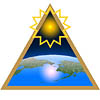|
Class Time Required |
5-6 class periods |
|
|
| 30 minutes to read through investigation and background and watch video. 30 minutes to gather materials and prepare handouts. | |
|
Prior Student Knowledge |
Experience in graphing data |
|
Vocabulary |
albedo, arctic, fluctuate, scatterplot, thermal expansion |
| Science GLEs Addressed |
6th Grade: SA1.1, SA1.2, SE2.2 7th Grade: SA1.1, SA1.2, SE2.2, SG3.1 8th Grade: SA1.1, SA1.2, SA2.1, SD2.1, SE 2.2, SE3.1, SG3.1 |
 This investigation has been selected as an NSF-funded Climate Literacy and Energy Awareness Network (CLEAN) educational resource.
This investigation has been selected as an NSF-funded Climate Literacy and Energy Awareness Network (CLEAN) educational resource.
 Overview: This 5-6 day investigation challenges students to think about how sea ice is changing and the effects of a warming climate on sea level in Alaska. Students begin by viewing a presentation showing a Native Alaskan talking about the importance of ice to his life and his culture. They then view a series of photos and headlines about shrinking sea ice. In Activity 1A: Arctic Sea Ice Data, students graph data on sea ice extent over time. In Activity 1B: Melting Sea Ice and Sea Level, students participate in a lab activity that simulates the melting of sea ice, and create a flip book of images of the change in sea ice extent over time. Activity 1C: Temperature and Sea Level Rise demonstrates the thermal expansion of seawater as one process that could contribute to sea level rise.
Overview: This 5-6 day investigation challenges students to think about how sea ice is changing and the effects of a warming climate on sea level in Alaska. Students begin by viewing a presentation showing a Native Alaskan talking about the importance of ice to his life and his culture. They then view a series of photos and headlines about shrinking sea ice. In Activity 1A: Arctic Sea Ice Data, students graph data on sea ice extent over time. In Activity 1B: Melting Sea Ice and Sea Level, students participate in a lab activity that simulates the melting of sea ice, and create a flip book of images of the change in sea ice extent over time. Activity 1C: Temperature and Sea Level Rise demonstrates the thermal expansion of seawater as one process that could contribute to sea level rise.


 Overview: In this 9-11 day investigation, students explore ways that changing climate can affect physical and biological conditions in rivers, the ocean, and other aquatic ecosystems. Activity 2A: Changing Landscape asks students to analyze “repeat photographs” (taken from the same vantage point at different times) of Alaska glaciers to observe the effects of retreating glaciers on the landscape. In Activity 2B: Melting Ice, students conduct a simulation to investigate the effect of melting glaciers on sea level. In Activity 2C, Stream Table, students simulate increasing stream flows that result from melting glaciers and observe the effects on the landscape and water quality. In Activity 2D: Transparency/Turbidity students construct a mini Secchi disk to investigate transparency and the effects of increased turbidity from the increased flows as glaciers melt on aquatic and marine ecosystems.
Overview: In this 9-11 day investigation, students explore ways that changing climate can affect physical and biological conditions in rivers, the ocean, and other aquatic ecosystems. Activity 2A: Changing Landscape asks students to analyze “repeat photographs” (taken from the same vantage point at different times) of Alaska glaciers to observe the effects of retreating glaciers on the landscape. In Activity 2B: Melting Ice, students conduct a simulation to investigate the effect of melting glaciers on sea level. In Activity 2C, Stream Table, students simulate increasing stream flows that result from melting glaciers and observe the effects on the landscape and water quality. In Activity 2D: Transparency/Turbidity students construct a mini Secchi disk to investigate transparency and the effects of increased turbidity from the increased flows as glaciers melt on aquatic and marine ecosystems.  Overview: In this 6-8 day investigation, students use a WebQuest activity to research the effects of melting sea ice in the Bering Sea Ecosystem. The students create research proposals to earn a place on the scientific research vessel Healy, and present their findings and proposals to a "Research Board committee".
Overview: In this 6-8 day investigation, students use a WebQuest activity to research the effects of melting sea ice in the Bering Sea Ecosystem. The students create research proposals to earn a place on the scientific research vessel Healy, and present their findings and proposals to a "Research Board committee". Overview: Students interview elders or other long-term residents of the community to document their knowledge of local changes to the landscape and climate. Based on the information and photos they acquired from the interview, students return to photo locations to observe and record changes. Finally, they develop ideas about potential impacts of a warming climate to the ecosystem that surrounds them.
Overview: Students interview elders or other long-term residents of the community to document their knowledge of local changes to the landscape and climate. Based on the information and photos they acquired from the interview, students return to photo locations to observe and record changes. Finally, they develop ideas about potential impacts of a warming climate to the ecosystem that surrounds them. Overview: In this culminating activity, students will share their knowledge of the impacts of a warming climate with others by creating a digital story of the potential effects of a warming climate in their community, the Arctic, and/or the Bering Sea.
Overview: In this culminating activity, students will share their knowledge of the impacts of a warming climate with others by creating a digital story of the potential effects of a warming climate in their community, the Arctic, and/or the Bering Sea.





